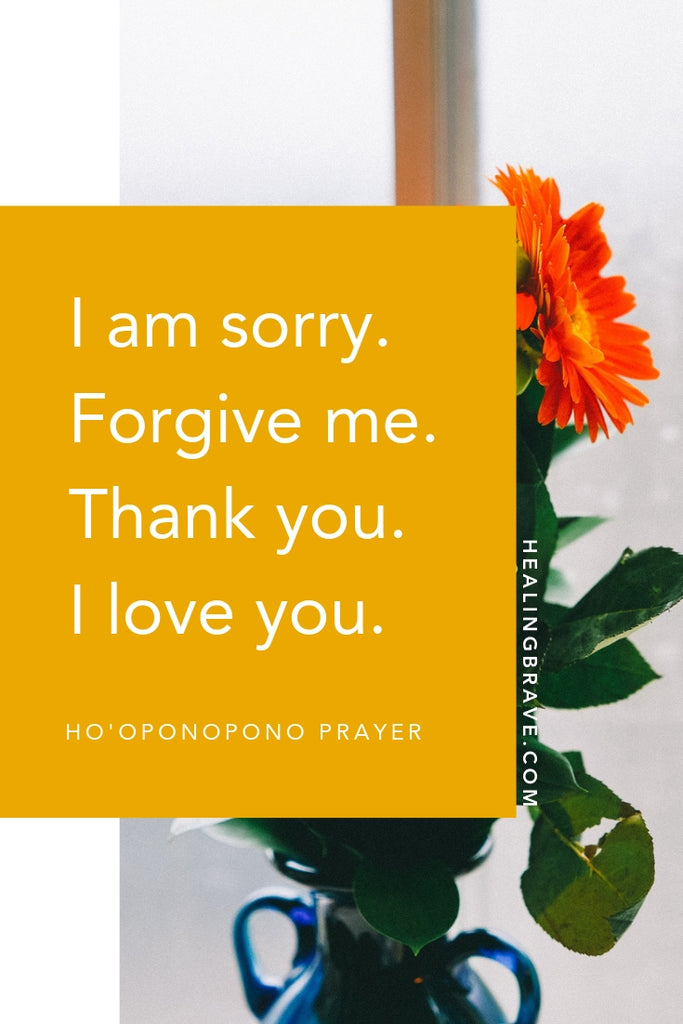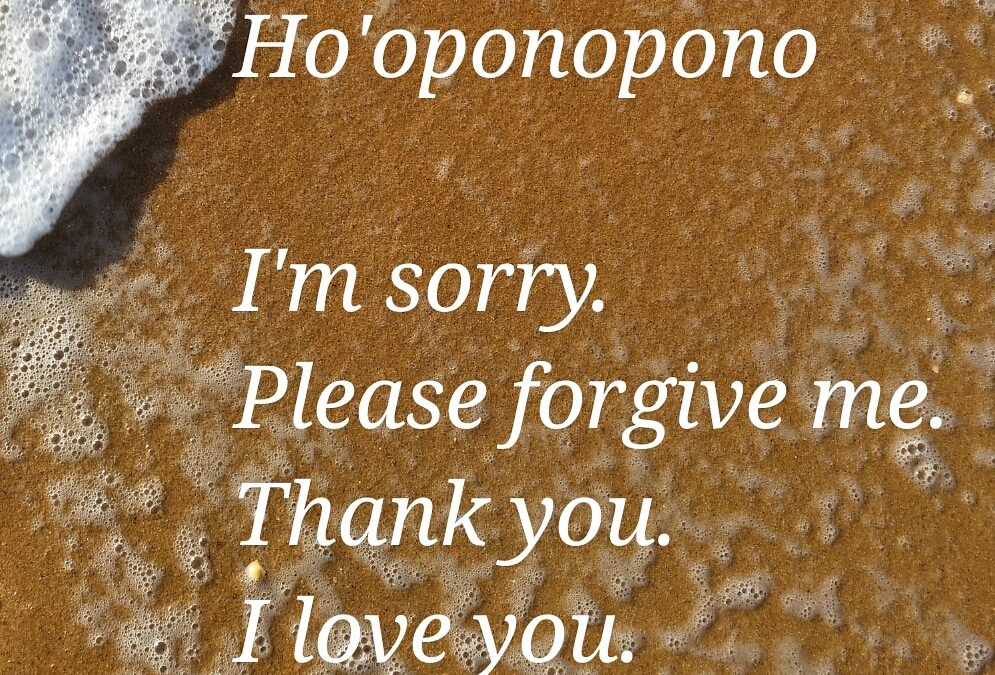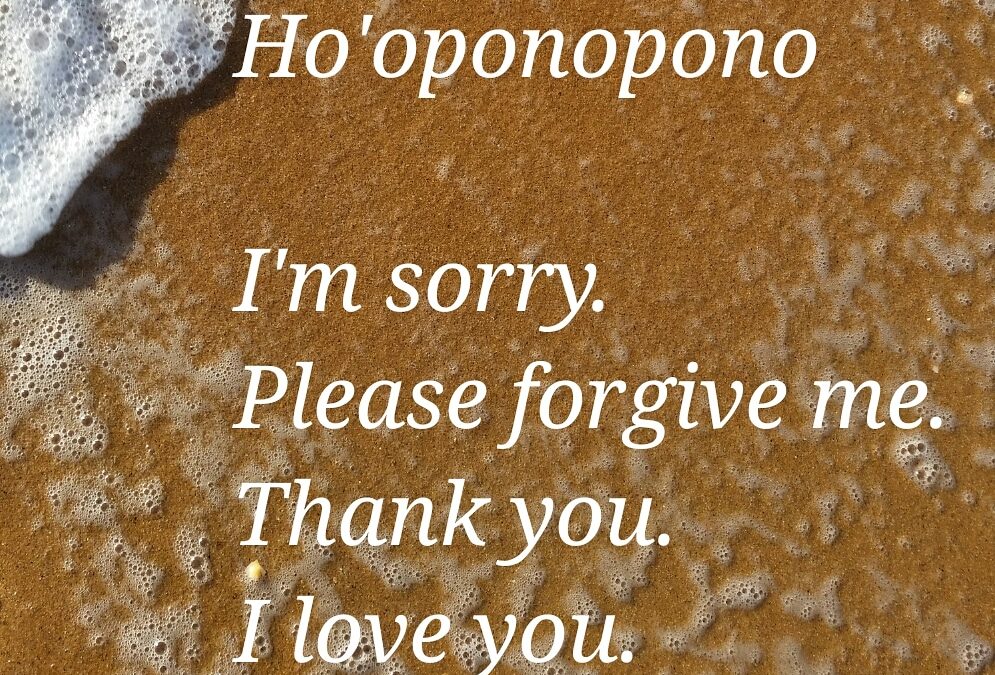Are you curious about how Ho’oponopono can help bring about forgiveness? In this article, we will explore the ancient Hawaiian practice of Ho’oponopono and how it can be a powerful tool for healing and forgiveness. Whether you have experienced a disagreement with a loved one or are searching for a way to let go of past hurts, Ho’oponopono offers a unique approach to finding peace and reconciliation. Stay tuned to discover the principles behind Ho’oponopono and the steps you can take to cultivate forgiveness in your life.
If you want to understand the transformative power of Ho’oponopono and how it can bring about forgiveness in your life, this article is for you. We will delve into the origins and philosophy behind this ancient Hawaiian practice, exploring the belief that we are all interconnected and responsible for each other’s wellbeing. By taking responsibility for our actions and perceptions, we can begin the process of healing and forgiveness. Get ready to learn practical techniques and tips that you can incorporate into your daily life to cultivate forgiveness, whether it is towards others or yourself. So, let’s dive in and uncover the secrets of Ho’oponopono and its potential to bring about forgiveness.
Understanding Ho’oponopono
Ho’oponopono is a traditional Hawaiian practice that has gained popularity worldwide for its powerful ability to bring about forgiveness and healing. In this article, we will explore the origins of Ho’oponopono, understand its meaning and purpose, and delve into the principles and techniques involved in this transformative practice.
Exploring the origins of Ho’oponopono
Ho’oponopono has its roots in the rich cultural traditions of Hawaii. The word itself translates to “to make right” or “to rectify an error” in Hawaiian. Historically, Ho’oponopono was practiced within families or communities as a way to resolve conflicts, restore peace, and promote harmony.
In essence, Ho’oponopono recognizes the interconnectedness of all living beings and acknowledges the impact our actions have on others. It emphasizes the importance of taking responsibility for our actions and seeking forgiveness to heal the wounds caused by our mistakes.
The meaning and purpose of Ho’oponopono
At its core, Ho’oponopono is a practice of reconciliation and forgiveness. It is a process that helps individuals release emotional baggage, negative beliefs, and unresolved conflicts within themselves and their relationships. By doing so, Ho’oponopono creates a space for healing, restoration, and personal transformation.
Ho’oponopono operates on the belief that every individual is responsible for their own experiences and that our thoughts and emotions have a direct impact on our reality. It encourages self-reflection, introspection, and taking conscious actions towards healing and forgiveness.
The Principles of Ho’oponopono
Taking responsibility for our actions
One of the fundamental principles of Ho’oponopono is the recognition that we are responsible for our own actions and the effects they have on others. It emphasizes the importance of acknowledging our mistakes, taking ownership of them, and seeking forgiveness.
By accepting responsibility, we can begin to heal the wounds we have caused, not only within ourselves but also within our relationships and communities. This principle teaches us that our actions and intentions are powerful, and by taking conscious control of them, we can bring about positive change and foster forgiveness.
Embracing forgiveness as a healing tool
Another principle of Ho’oponopono is the practice of forgiveness. Forgiveness is seen as a powerful tool for healing and transformation. It involves letting go of past hurts, resentments, and grievances, and choosing to release the emotional baggage associated with them.
Ho’oponopono recognizes that holding onto anger, grudges, and negative emotions only perpetuates suffering and prevents personal growth. By embracing forgiveness, we free ourselves from the burden of the past, allowing space for healing, love, and harmony to flourish.

The Four Phrases of Ho’oponopono
I’m sorry
The phrase “I’m sorry” is a powerful acknowledgment of our own mistakes, shortcomings, and the pain we may have caused. It expresses genuine remorse and sets the stage for healing and reconciliation.
When we say “I’m sorry” in the context of Ho’oponopono, we are not only apologizing to others but also taking responsibility for our own healing. We recognize that our thoughts, beliefs, and actions contribute to our reality and the experiences of those around us.
Please forgive me
The phrase “Please forgive me” is a humble request for forgiveness, both from others and from ourselves. It acknowledges that we may have unintentionally hurt or wronged someone, and we genuinely seek their forgiveness to restore harmony and heal the wounds.
As we say “Please forgive me” during Ho’oponopono, we also ask for forgiveness from ourselves. We understand that self-forgiveness is crucial for personal growth and transformation. By releasing self-judgment and guilt, we open the door to self-love, acceptance, and healing.
Thank you
The phrase “Thank you” is an expression of gratitude and appreciation, even in the face of challenges and conflict. It recognizes the lessons learned through difficult experiences and the growth that can come from them.
In the context of Ho’oponopono, saying “Thank you” is a way of acknowledging the deep wisdom and spiritual guidance that is always present. It affirms our trust in the process of healing and forgiveness, recognizing that every experience, regardless of its nature, has the potential to bring about personal transformation.
I love you
Lastly, the phrase “I love you” represents an affirmation of unconditional love and acceptance. It is an acknowledgment of the inherent worth and divinity within ourselves and others.
In Ho’oponopono, saying “I love you” is a way of extending compassion and healing energy to all beings. It aligns us with the universal power of love and helps to dissolve barriers, resentment, and pain. By embracing love as the guiding force in our lives, we create an environment conducive to forgiveness, healing, and personal growth.
The Healing Power of Ho’oponopono
Releasing emotional baggage and negative beliefs
One of the profound ways that Ho’oponopono brings about forgiveness is by helping individuals release emotional baggage and negative beliefs that hold them back. The practice encourages self-reflection and introspection, enabling individuals to identify and heal unresolved emotions and traumas.
Through the repeated use of the four phrases, Ho’oponopono acts as a powerful cleansing process for the mind and spirit. It helps to dissolve deep-rooted pain, resentment, and negative thought patterns, allowing space for forgiveness, healing, and personal transformation.
Restoring harmony in relationships and within oneself
Ho’oponopono also plays a crucial role in restoring harmony within relationships and strengthening the connection with oneself. By taking responsibility for our actions, seeking forgiveness, and expressing love and gratitude, we create an environment conducive to healing, understanding, and reconciliation.
In the context of relationships, Ho’oponopono can mend broken bonds, dissolve conflicts, and foster deeper connections based on forgiveness and compassion. Within oneself, the practice brings about a sense of inner peace, self-acceptance, and personal growth.

The Process of Ho’oponopono
Self-reflection and introspection
A significant part of practicing Ho’oponopono involves self-reflection and introspection. It requires individuals to take an honest look at themselves, their thoughts, emotions, and actions. This process helps to identify areas where forgiveness and healing are needed, both within oneself and in relationships.
By engaging in self-reflection, we become aware of any negative beliefs or emotional baggage that may hinder our growth and forgiveness. This awareness is the first step towards releasing these limitations and creating space for positive change and transformation.
Meditation and visualization techniques
Meditation and visualization techniques are often incorporated into the practice of Ho’oponopono to deepen the healing process. Through meditation, individuals can calm the mind, cultivate mindfulness, and develop a deeper connection with their inner selves.
Visualization techniques, such as imagining a bright light or healing energy flowing through the body, can assist in releasing negative emotions or traumas. These techniques create a visual representation of the healing and forgiveness process, enhancing its effectiveness and guiding individuals towards a state of emotional balance.
Repeating the four phrases
The repeated use of the four phrases – “I’m sorry, Please forgive me, Thank you, I love you” – is a central aspect of Ho’oponopono. They act as mantras that help to reprogram the mind and release negative energy.
By continuously reciting the four phrases, individuals reinforce their intention to seek forgiveness, heal wounds, and cultivate love and gratitude within themselves and towards others. This repetition strengthens the healing process, gradually transforming negative thought patterns and facilitating forgiveness and personal growth.
Benefits of Practicing Ho’oponopono
Improved mental and emotional well-being
One of the key benefits of practicing Ho’oponopono is the improved mental and emotional well-being it facilitates. By releasing emotional baggage, negative beliefs, and unresolved conflicts within oneself, individuals experience a sense of emotional release and freedom.
Ho’oponopono promotes inner peace, self-acceptance, and a positive outlook on life. It helps individuals let go of resentment, anger, and negative thought patterns, fostering a state of emotional balance, clarity, and overall well-being.
Enhanced relationships and communication
Another benefit of Ho’oponopono is the enhancement of relationships and communication. Through the practice of forgiveness and reconciliation, individuals find healing and build stronger connections with others.
Ho’oponopono fosters open and honest communication, resolving conflicts and promoting understanding. It creates an environment of trust, compassion, and empathy, laying the foundation for healthier and more fulfilling relationships.
Increased self-awareness and personal growth
Practicing Ho’oponopono cultivates increased self-awareness and personal growth. By engaging in self-reflection and introspection, individuals gain deep insights into their own thoughts, emotions, and actions.
This self-awareness enables individuals to recognize their patterns, limitations, and areas for growth. By taking responsibility for their actions and seeking forgiveness, they embark on a journey of personal transformation, expanding their consciousness and living a more authentic and fulfilling life.

Overcoming Challenges in Ho’oponopono
Dealing with resistance and skepticism
While the practice of Ho’oponopono offers transformative potential, it is not exempt from challenges. One of the common challenges individuals may face is resistance and skepticism.
Some may find it difficult to believe in the efficacy of Ho’oponopono or to accept responsibility for their actions. Overcoming this resistance requires an open mind and a willingness to explore new perspectives and practices. Patience, practice, and seeking guidance from experienced practitioners can help individuals navigate these challenges and embrace the healing power of Ho’oponopono.
Maintaining consistency and dedication
Another challenge in practicing Ho’oponopono is maintaining consistency and dedication. Like any transformative practice, Ho’oponopono requires commitment and regularity to yield its full benefits.
Consistency can be challenging amidst the busyness of daily life. Creating a routine and dedicating specific time for the practice of Ho’oponopono can help individuals overcome this challenge and cultivate a consistent and dedicated practice.
Ho’oponopono in Modern Society
Applying Ho’oponopono in daily life
Ho’oponopono is a practice that can be applied in various aspects of daily life. It can be used to heal and transform individual relationships, whether it be with family members, friends, or colleagues. By practicing forgiveness and taking responsibility for our actions, we create an environment conducive to growth, understanding, and harmony.
Beyond individual relationships, Ho’oponopono can also be applied to larger societal issues. By recognizing our interconnectedness and taking collective responsibility for the well-being of humanity and the planet, we can foster forgiveness, peace, and healing on a broader scale.
Using Ho’oponopono in professional settings
Ho’oponopono can also have a place in professional settings. By embracing forgiveness and taking responsibility for our actions, we can foster a positive work environment, strengthen team dynamics, and promote effective communication.
In professional settings, Ho’oponopono can be utilized to resolve conflicts, promote understanding, and create a space for growth and innovation. It encourages individuals to take ownership of their actions, seek forgiveness when necessary, and foster a culture of compassion and cooperation.

Critiques and Controversies Surrounding Ho’oponopono
Examining cultural appropriation concerns
While Ho’oponopono has gained popularity globally, it is important to acknowledge and address concerns of cultural appropriation. Ho’oponopono originated within the indigenous Hawaiian culture as a sacred and deeply spiritual practice.
To practice Ho’oponopono with respect and authenticity, it is essential to understand and honor its cultural origins. This includes seeking guidance from knowledgeable practitioners, respecting cultural protocols, and recognizing the significance and sacredness of the practice.
Evaluating scientific evidence and skepticism
Ho’oponopono, like many traditional practices, may face skepticism and a lack of scientific evidence in the Western world. While scientific research may provide insights into the mechanisms and benefits of forgiveness, the subjective nature of personal transformation and healing can be challenging to measure objectively.
It is important to recognize that the effectiveness of Ho’oponopono lies in the personal experiences and testimonials of those who have practiced it. The transformative power of forgiveness and personal growth cannot always be quantified scientifically, yet the impact on individuals’ lives can be profound and life-changing.
Conclusion
Ho’oponopono is a powerful tool for forgiveness and healing that has the potential to bring about profound personal transformation. By embracing the principles, techniques, and phrases of Ho’oponopono, individuals can release emotional baggage, restore harmony in relationships, and cultivate self-awareness and personal growth.
While challenges may arise, such as resistance and skepticism, Ho’oponopono offers a path towards forgiveness, understanding, and connectedness. Applying this practice in daily life, both personally and professionally, can lead to enhanced mental and emotional well-being, improved relationships, and a deeper sense of purpose and fulfillment.
As we embrace the healing power of Ho’oponopono, we tap into the wisdom and potential for personal transformation that exists within each and every one of us. Through forgiveness and love, we pave the way for a more compassionate, harmonious, and forgiving world.

